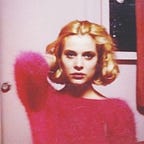Let’s explore this magnificent movie point by point!
What is the moral/theme of the film?
The movie’s theme revolves around a horse rider, Brady, who can’t ride after an accident and needs to accept his fate and move on. Our protagonist is religious, and he explains that everyone has a purpose on Earth,” to the horse, it’s to run across the prairie, for a cowboy, it’s to ride.” So, overcoming that belief and finding a way, a purpose, is masterfully explored in “The Rider.”
What are classic western tropes utilized?
When we look at Chloe Zhao’s filmmaking, we notice that she utilizes wide-angle lenses a lot in her work. And that works very well with capturing the vast plains of South Dakota in the movie. That gives the film its western feeling. The vast wilderness of the Badlands of Dakota makes up a good visual for this western. Furthermore, at some point in the movie, when Brady’s father tries to stop him from doing something stupid, Brady questions things said by his father since childhood. He screams, “What happened to “Cowboy up,” “Grit your teeth,” “Be a man?” The idea of “manning up” doesn’t work anymore when your life is at stake. And father also understands this now. And as modern viewers, we understand that that kind of thinking is of the past, of the wild; we are in a civilized world now, where “manning up” has become archaic. And, of course, the stripped-down visual style, including horses and cowboys, makes it a western experience.
What does the protagonist represent?
The protagonist is a person who tries to come to terms with a horrible accident that changed the course of his life. He represents the harsh reality of moving on and adapting. Even the director said how at the end, when Brady understands what he needs to do, the pain doesn’t stop. The movie ends, but life goes on, and it doesn’t get easier. Brady represents that there isn’t only one purpose for a person, even though he previously says there’s. He illustrates how we have other pursuits that make life worth living, such as family and friends. Chloe Zhao adds complexity to the theme, saying that “walk away or die trying” are easy choices, whereas in Brady’s case, even when he walks away, he has hope. Even his paralyzed friend has it by saying, “don’t give up on your dreams.” So, it’s not easy to walk away, it never becomes easier to leave your dreams behind, but it’s also not impossible. That’s what Brady represents.
By contrast, what does the antagonist represent?
There’s no definite antagonist in “The Rider,” even though one may argue that it’s the restriction put on the character by the wild nature of his sport. The ultimate antagonists of the film are the accident that made him incapable of riding and doing rodeo, those restrictions on the character that crushed his purpose to ride. He needs to battle it not externally but internally. He needs to fight himself to move on and not get stuck in a rut. And that is a modern western way of cinema, self vs. self. Moreover, as we have previously mentioned, the idea of “manning up” is also a contender for the antagonist, meaning toxic masculinity.
What defines “The Rider” as a Western?
The most exciting and western thing about the film was where and how it was shot. The story takes place in Badlands, South Dakota. The use of wide-angle lenses let us marvel at the beauty of the location and heightened the western feel. For that reason, the cinematography is my favorite part of “The Rider.”
